SNVS179F February 2003 – September 2015 LP3995
PRODUCTION DATA.
- 1 Features
- 2 Applications
- 3 Description
- 4 Revision History
- 5 Pin Configuration and Functions
- 6 Specifications
- 7 Parameter Measurement Information
- 8 Detailed Description
- 9 Application and Implementation
- 10Power Supply Recommendations
- 11Layout
- 12Device and Documentation Support
- 13Mechanical, Packaging, and Orderable Information
6 Specifications
6.1 Absolute Maximum Ratings
over operating free-air temperature range (unless otherwise noted)(1)(2)(3)| MIN | MAX | UNIT | ||
|---|---|---|---|---|
| Input voltage, VIN | –0.3 | 6.5 | V | |
| Output voltage | –0.3 | (VIN + 0.3 V) to 6.5 | V | |
| Enable input voltage | –0.3 | 6.5 | V | |
| Junction temperature | 150 | °C | ||
| Continuous power dissipation(4) | Internally limited | |||
| Storage temperature, Tstg | −65 | 150 | °C | |
(1) Stresses beyond those listed under Absolute Maximum Ratings may cause permanent damage to the device. These are stress ratings only, which do not imply functional operation of the device at these or any other conditions beyond those indicated under Recommended Operating Conditions. Exposure to absolute-maximum-rated conditions for extended periods may affect device reliability.
(2) All voltages are with respect to the potential at the GND pin.
(3) If Military/Aerospace specified devices are required, contact the Texas Instruments Sales Office / Distributors for availability and specifications.
(4) In applications where high power dissipation and/or poor thermal resistance is present, the maximum ambient temperature may have to be derated. Maximum ambient temperature (TA(MAX)) is dependant on the maximum operating junction temperature (TJ(MAX-OP)), the maximum power dissipation (PD(MAX)), and the junction-to-ambient thermal resistance in the application (RθJA). This relationship is given by: TA(MAX) = TJ(MAX-OP) − (PD(MAX) × RθJA).
6.2 ESD Ratings
| VALUE | UNIT | |||
|---|---|---|---|---|
| V(ESD) | Electrostatic discharge | Human-body model (HBM), per ANSI/ESDA/JEDEC JS-001(1) | ±2000 | V |
| Machine model | ±200 | |||
(1) JEDEC document JEP155 states that 500-V HBM allows safe manufacturing with a standard ESD control process.
6.3 Recommended Operating Conditions
over operating free-air temperature range (unless otherwise noted)| MIN | NOM | MAX | UNIT | ||
|---|---|---|---|---|---|
| Input voltage, VIN | 2.5 | 6 | V | ||
| Enable input voltage | 0 | 6 | V | ||
| Junction temperature | −40 | 125 | °C | ||
| Ambient temperature(1) | −40 | 85 | °C | ||
(1) In applications where high power dissipation and/or poor thermal resistance is present, the maximum ambient temperature may have to be derated. Maximum ambient temperature (TA(MAX)) is dependant on the maximum operating junction temperature (TJ(MAX-OP)), the maximum power dissipation (PD(MAX)), and the junction-to-ambient thermal resistance in the application (RθJA). This relationship is given by: TA(MAX) = TJ(MAX-OP) − (PD(MAX) × RθJA).
6.4 Thermal Information
| THERMAL METRIC(1) | LP3995 | UNIT | ||
|---|---|---|---|---|
| YZR (DSBGA) | NGD (WSON) | |||
| 5 PINS | 6 PINS | |||
| RθJA(2) | Junction-to-ambient thermal resistance, High-K | 181.2 | 68.5(3) | °C/W |
| RθJC(top) | Junction-to-case (top) thermal resistance | 0.8 | 71.8 | °C/W |
| RθJB | Junction-to-board thermal resistance | 107.9 | 35.2 | °C/W |
| ψJT | Junction-to-top characterization parameter | 0.5 | 1.4 | °C/W |
| ψJB | Junction-to-board characterization parameter | 107.9 | 35.0 | °C/W |
| RθJC(bot) | Junction-to-case (bottom) thermal resistance | N/A | 8.1 | °C/W |
(1) For more information about traditional and new thermal metrics, see the Semiconductor and IC Package Thermal Metrics application report, SPRA953.
(2) Thermal resistance value RθJA is based on the EIA/JEDEC High-K printed circuit board defined by: JESD51-7 - High Effective Thermal Conductivity Test Board for Leaded Surface Mount Packages.
(3) The PCB for the NGD (WSON) package RθJA includes two (2) thermal vias under the exposed thermal pad per EIA/JEDEC JESD51-5.
6.5 Electrical Characteristics
Unless otherwise noted, VEN = 1.5 V, VIN = VOUT + 1 V, CIN = 1 µF, IOUT = 1 mA, COUT = 1 µF, CBYPASS = 0.01 µF. Typical (TYP) values and limits apply for TJ = 25°C; minimum (MIN) and maximum (MAX) apply over the full temperature range for operation, −40 to +125°C, unless otherwise specified in the Test Conditions. (1)(2)| PARAMETER | TEST CONDITIONS | MIN | TYP | MAX | UNIT | |
|---|---|---|---|---|---|---|
| VIN | Input voltage | 2.5 | 6 | V | ||
| DEVICE OUTPUT: 1.5 ≤ VOUT < 1.8V | ||||||
| ΔVOUT | Output voltage tolerance | IOUT = 1 mA, TJ = 25°C | –50 | 50 | mV | |
| IOUT = 1 mA | –75 | 75 | ||||
| Line regulation error | VIN = (VOUT(NOM)+1 V) to 6V, IOUT = 1 mA |
–3.5 | 3.5 | µV/mA | ||
| Load regulation error, DSBGA | IOUT = 1 mA to 150 mA | 10 | 75 | µV/mA | ||
| Load regulation error, WSON | IOUT = 1 mA to 150 mA | 70 | 125 | µV/mA | ||
| PSRR | Power supply rejection ratio(3) | ƒ = 1 kHz, IOUT = 1 mA | 55 | dB | ||
| ƒ = 10 kHz, IOUT = 1 mA | 53 | |||||
| DEVICE OUTPUT: 1.8 V ≤ VOUT < 2.5 V | ||||||
| ΔVOUT | Output voltage tolerance | IOUT = 1 mA, TJ = 25°C | –50 | 50 | mV | |
| IOUT = 1 mA | –75 | 75 | ||||
| Line regulation error, DSBGA | VIN = (VOUT(NOM)+1 V) to 6 V, IOUT = 1 mA |
–2.5 | 2.5 | mV/V | ||
| Line regulation error, WSON | VIN = (VOUT(NOM)+1 V) to 6 V IOUT = 1 mA |
–3.5 | 3.5 | mV/V | ||
| Load regulation error, DSBGA | IOUT = 1 mA to 150 mA | 10 | 75 | µV/mA | ||
| Load regulation error, WSON | IOUT = 1 mA to 150 mA | 80 | 125 | µV/mA | ||
| PSRR | Power supply rejection ratio(3) | ƒ = 1 kHz, IOUT = 1 mA | 55 | dB | ||
| ƒ = 10 kHz, IOUT = 1 mA | 50 | |||||
| DEVICE OUTPUT: 2.5 V ≤ VOUT ≤ 3.3 V | ||||||
| ΔVOUT | Output voltage tolerance | IOUT = 1 mA, TJ = 25°C | –2 | 2 | % of VOUT(NOM) | |
| IOUT = 1 mA | –3 | 3 | ||||
| Line regulation error | VIN = (VOUT(NOM)+1 V) to 6 V IOUT = 1 mA |
–0.1 | 0.1 | %/V | ||
| Load regulation error, DSBGA | IOUT = 1 mA to 150 mA | 0.0004 | 0.002 | %/mA | ||
| Load regulation error, WSON | IOUT = 1 mA to 150 mA | 0.002 | 0.005 | %/mA | ||
| Dropout voltage | IOUT = 1 mA | 0.4 | 2 | mV | ||
| IOUT = 150 mA | 60 | 100 | ||||
| PSRR | Power supply rejection ratio(3) | ƒ = 1 kHz, IOUT = 1 mA | 60 | dB | ||
| ƒ = 10 kHz, IOUT = 1 mA | 50 | |||||
| FULL VOUT RANGE | ||||||
| ILOAD | Load current | See(3)(4) | 0 | µA | ||
| IQ | Quiescent current | VEN = 1.5 V, IOUT = 0 mA | 85 | 150 | µA | |
| VEN = 1.5 V, IOUT = 150 mA | 140 | 200 | ||||
| VEN = 0.4 V | 0.003 | 1.5 | ||||
| ISC | Short-circuit current limit | 450 | mA | |||
| EN | Output noise voltage(3) | BW = 10 Hz to 100 kHz, VIN = 4.2 V, IOUT = 1 mA |
25 | µVRMS | ||
| TSHUTDOWN | Thermal shutdown | Temperature | 160 | °C | ||
| Hysteresis | 20 | |||||
| ENABLE CONTROL CHARACTERISTICS | ||||||
| IEN | Maximum input current at EN input | VEN = 0 V and VIN = 6 V | 0.001 | µA | ||
| VIL | Low input threshold | 0.4 | V | |||
| VIH | High input threshold | 0.9 | V | |||
(1) All limits are ensured. All electrical characteristics having room-temperature limits are tested during production at TJ = 25°C or correlated using Statistical Quality Control methods. Operation over the temperature specification is specified by correlating the electrical characteristics to process and temperature variations and applying statistical process control.
(2) VOUT(NOM) is the stated output voltage option for the device.
(3) This electrical specification is ensured by design.
(4) The device maintains a stable, regulated output voltage without load.
6.6 Timing Requirements
| MIN | NOM | MAX | UNIT | ||
|---|---|---|---|---|---|
| tON | Turnon time to 95% level (1)(2) | 30 | µs | ||
| tOFF | Turnoff time to 5% level (1)(3) | 175 | µs | ||
(1) This electrical specification is ensured by design.
(2) Time from VEN = 0.9 V to VOUT = 95% (VOUT(NOM)).
(3) Time from VEN = 0.4 V to VOUT = 5% (VOUT(NOM)).
6.7 Typical Characteristics
Unless otherwise specified, CIN = COUT = 1 µF ceramic, VIN = VOUT + 1 V, TA = 25°C, EN pin is tied to VIN.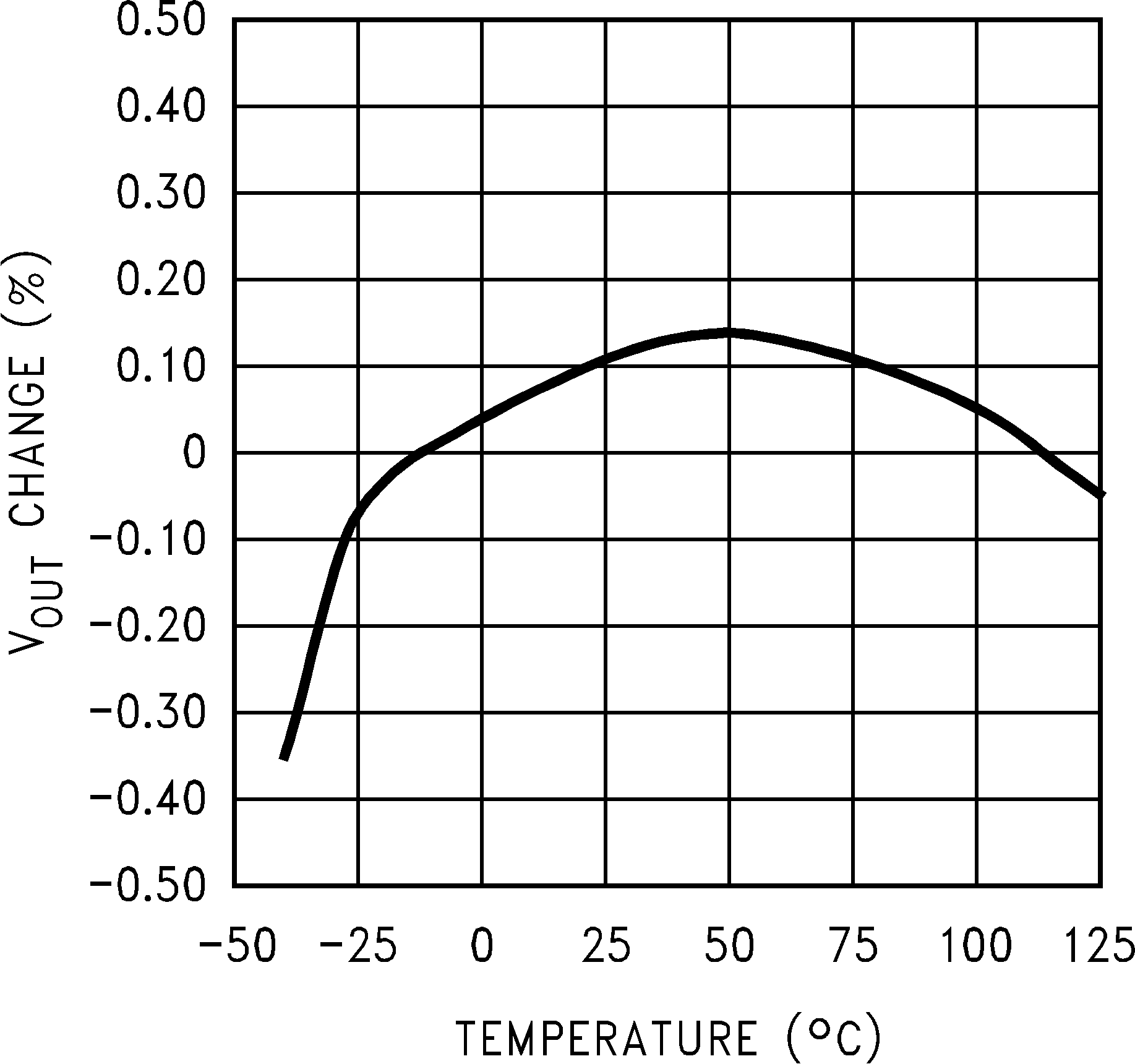
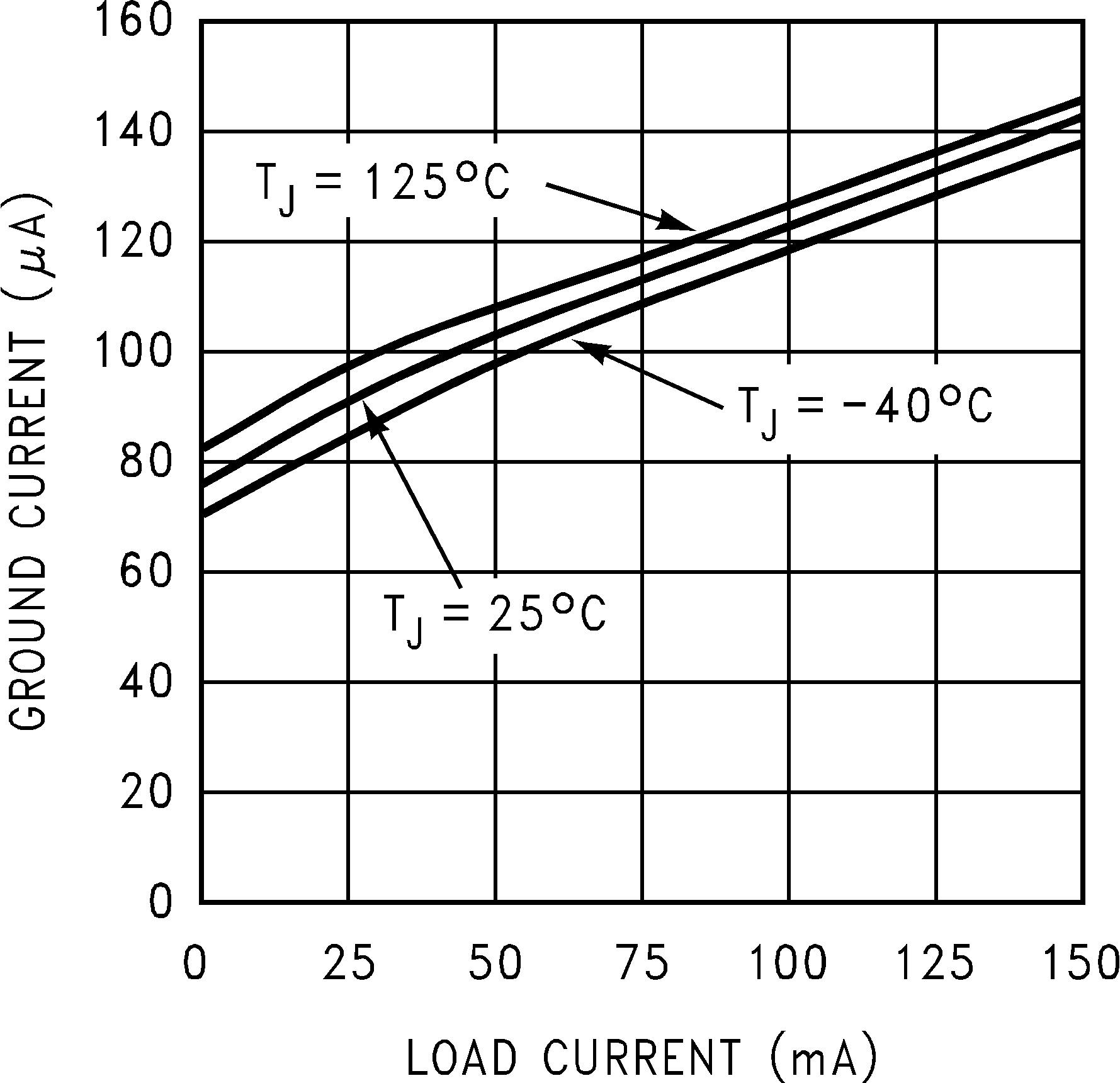
| VOUT = 2.8 V |
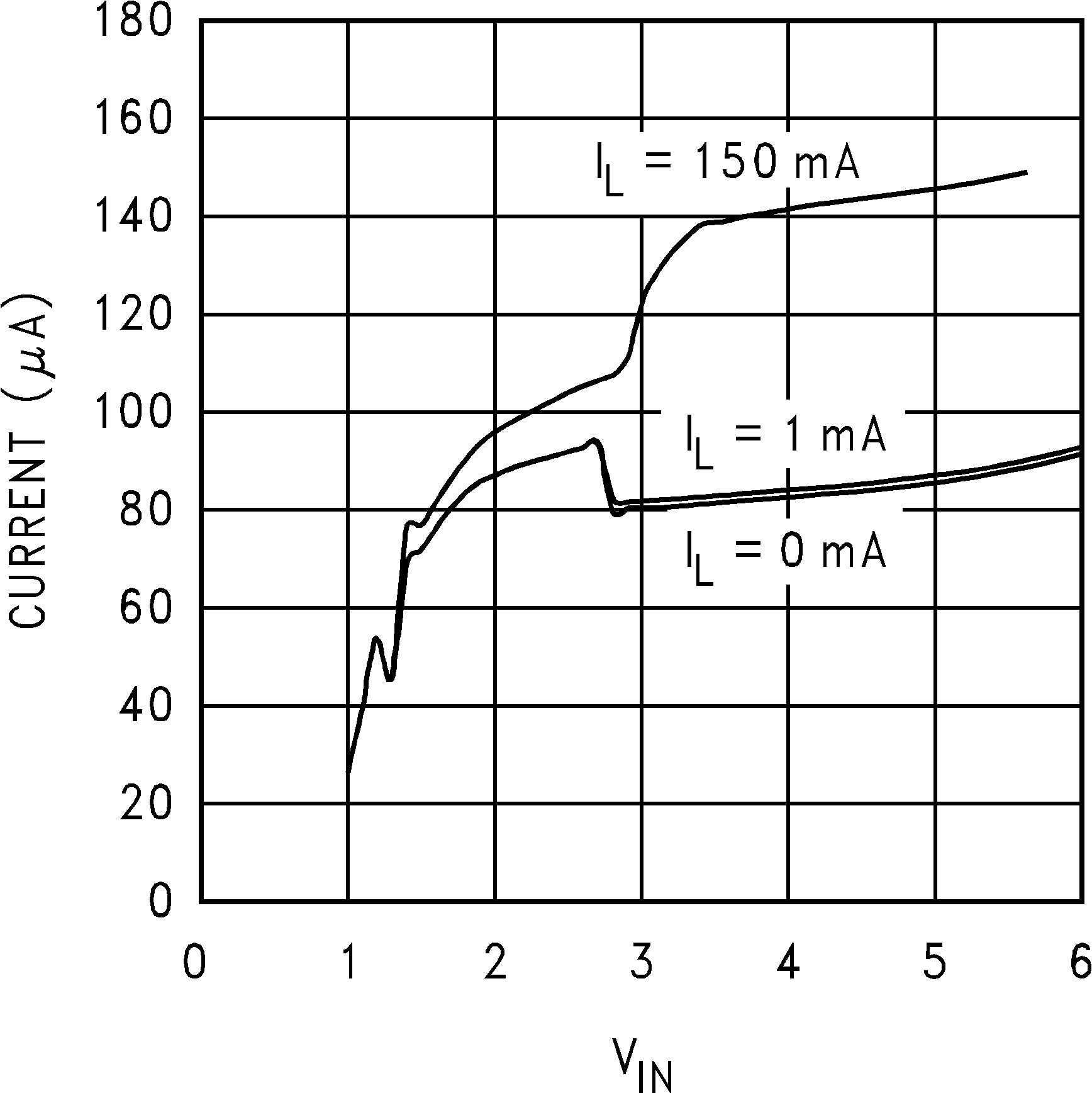
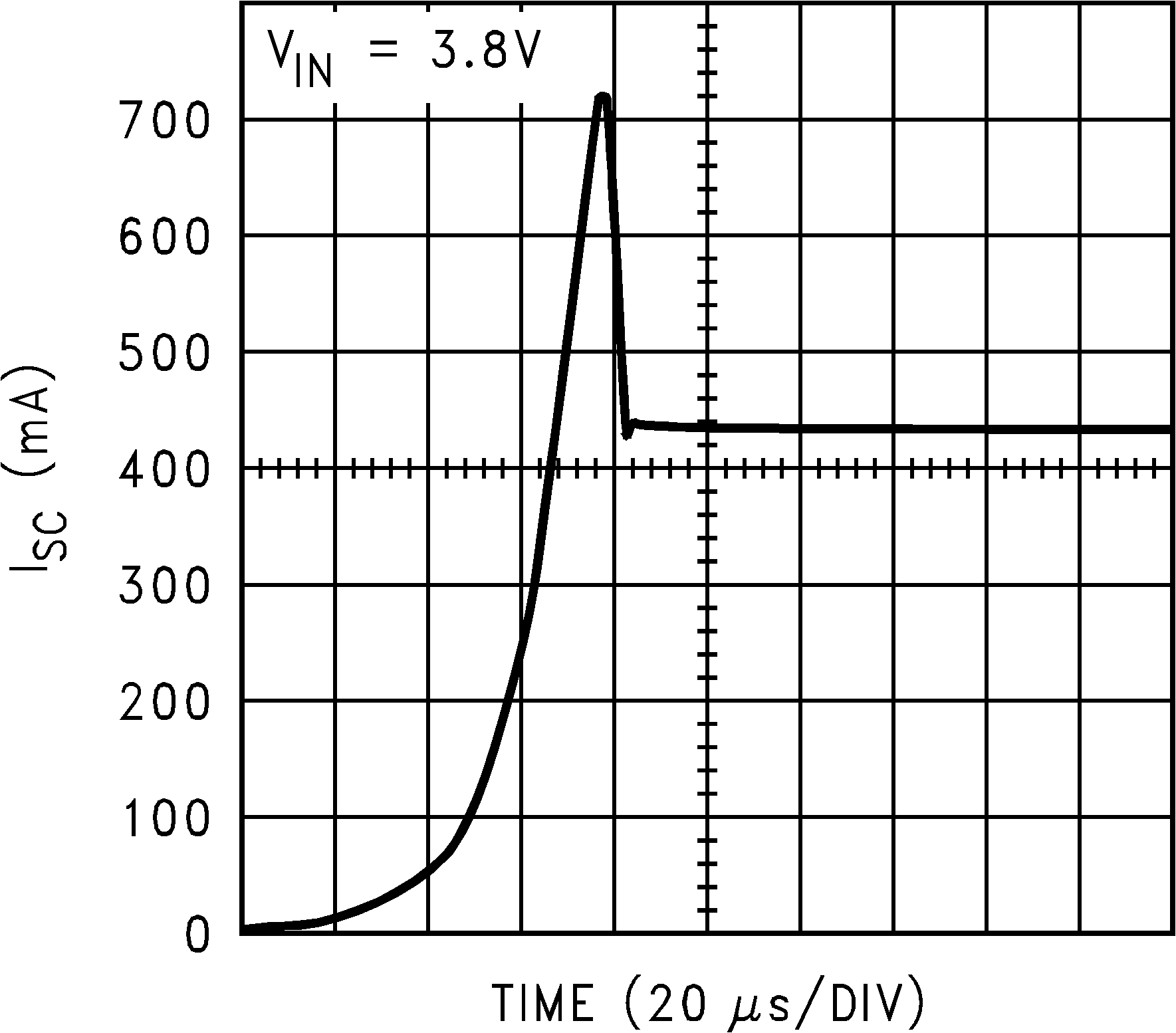
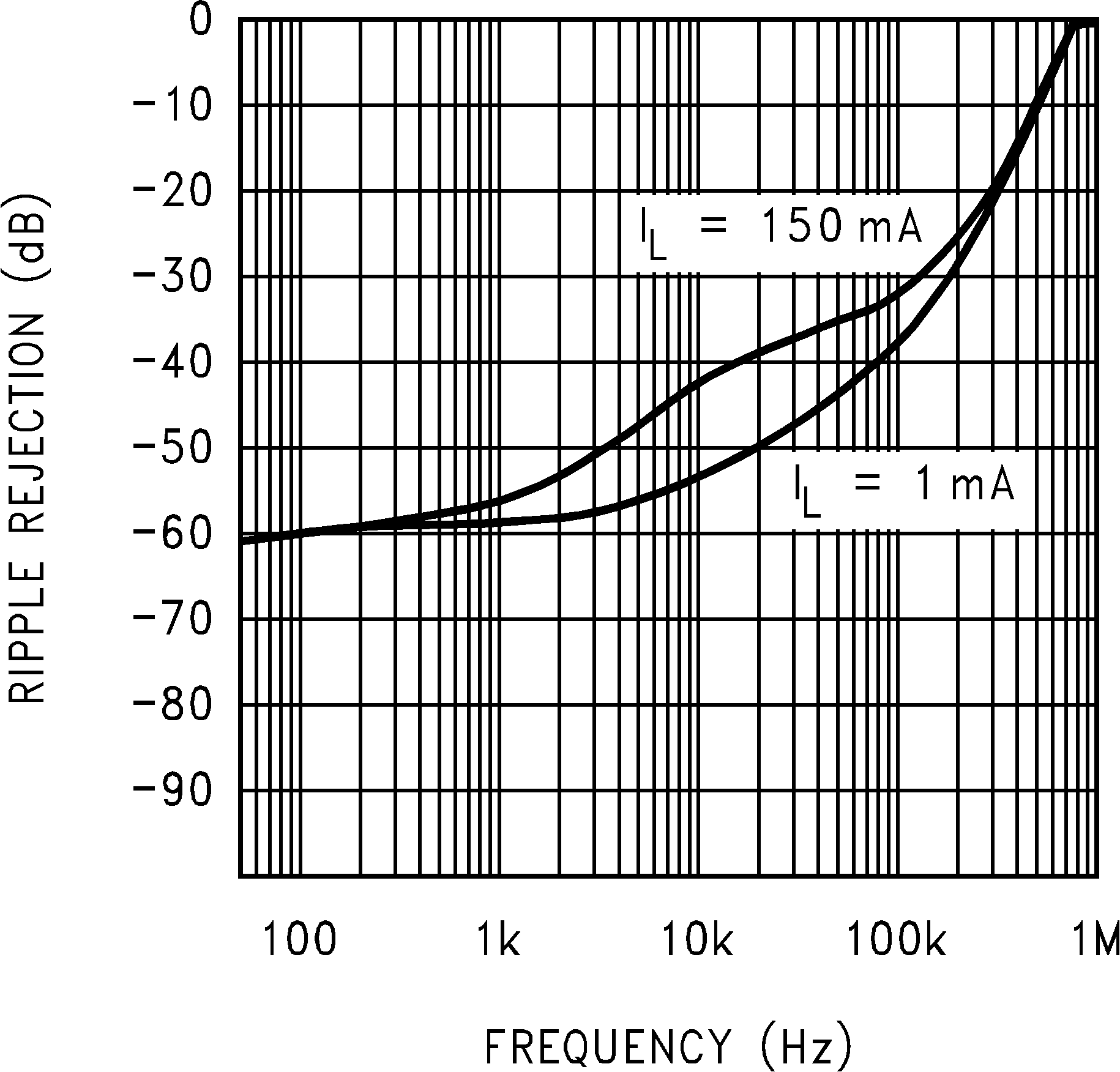
| VOUT = 2.8 V |
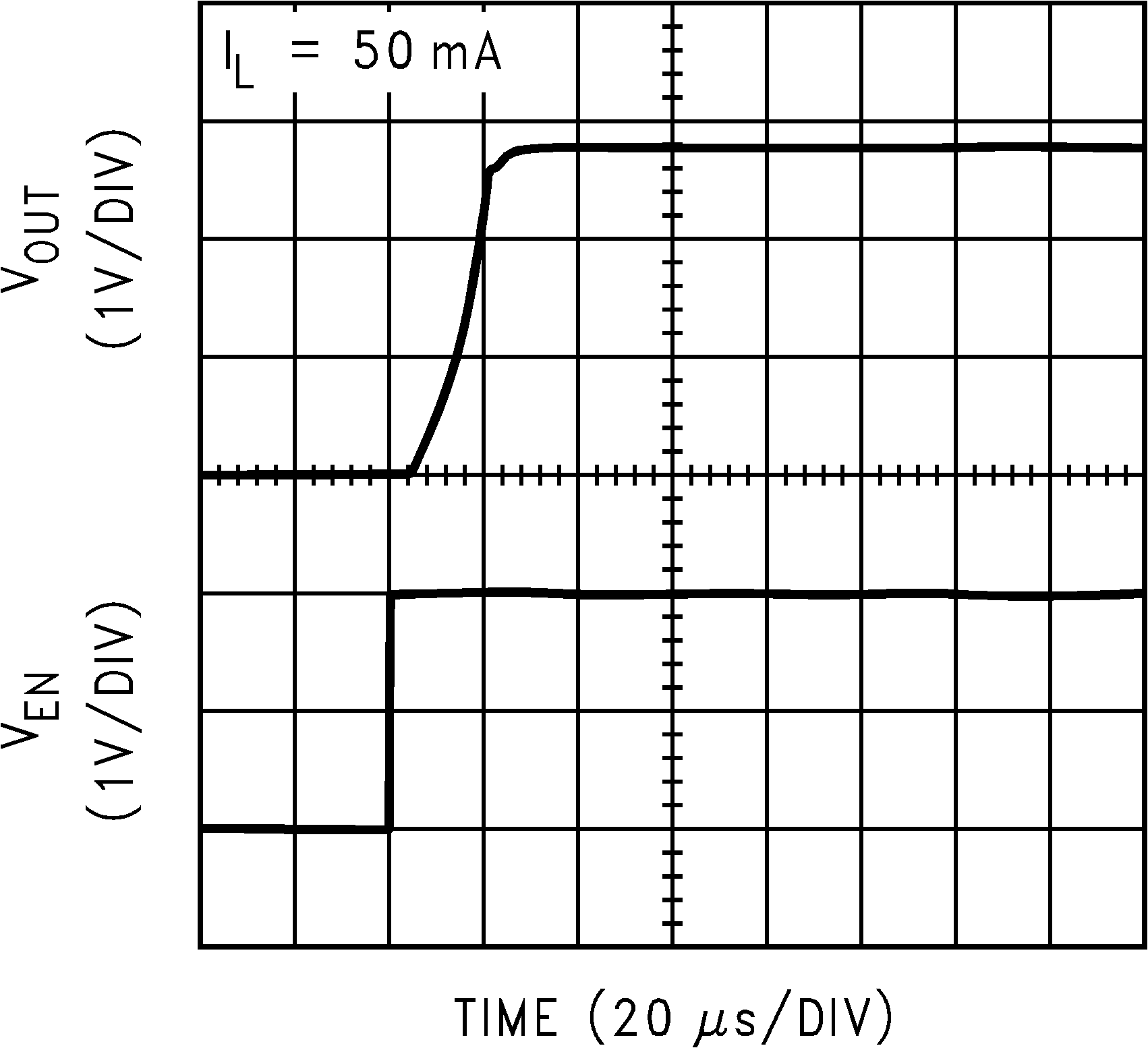
| VOUT = 2.8 V |
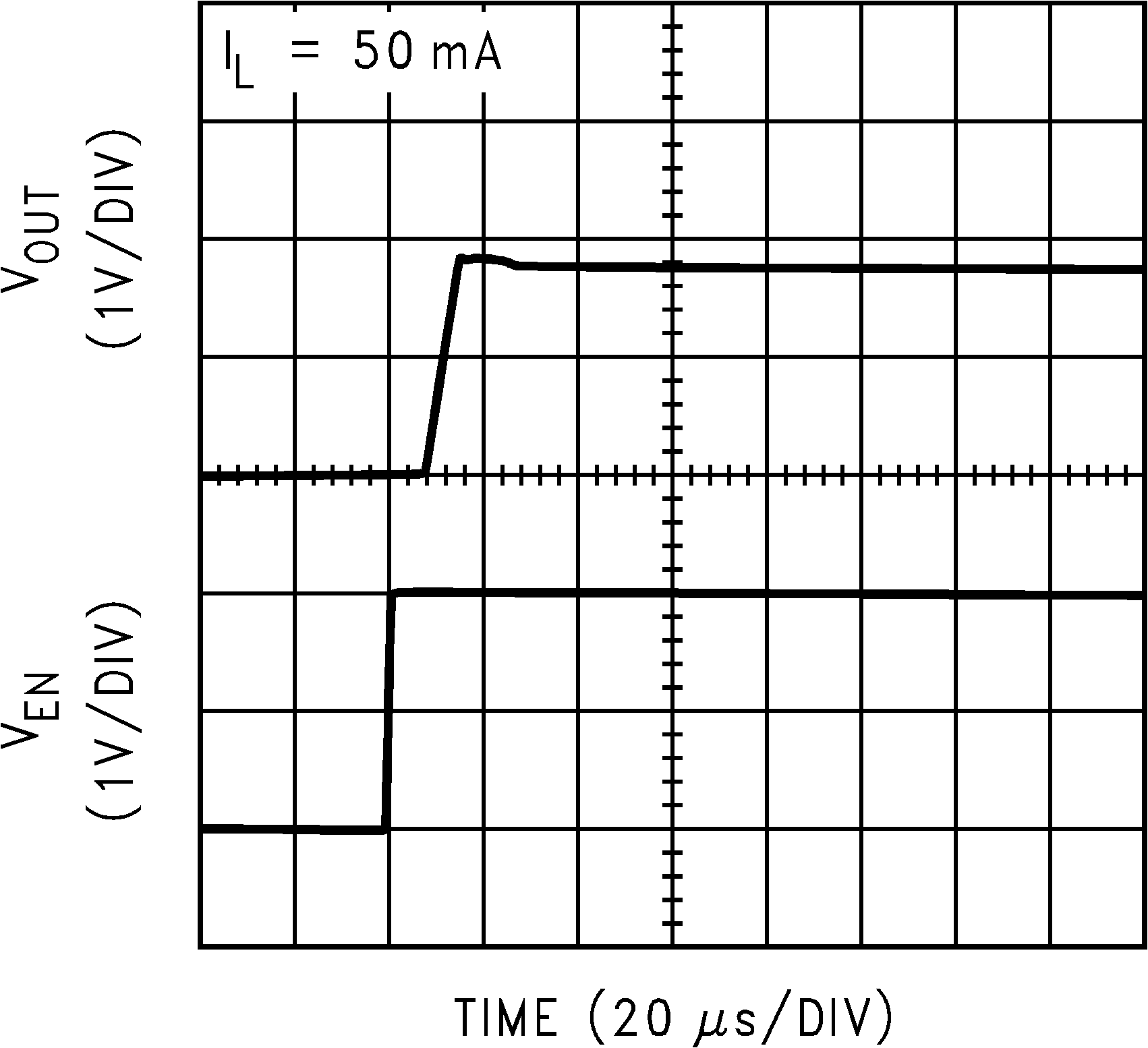
| VOUT = 1.8 V |
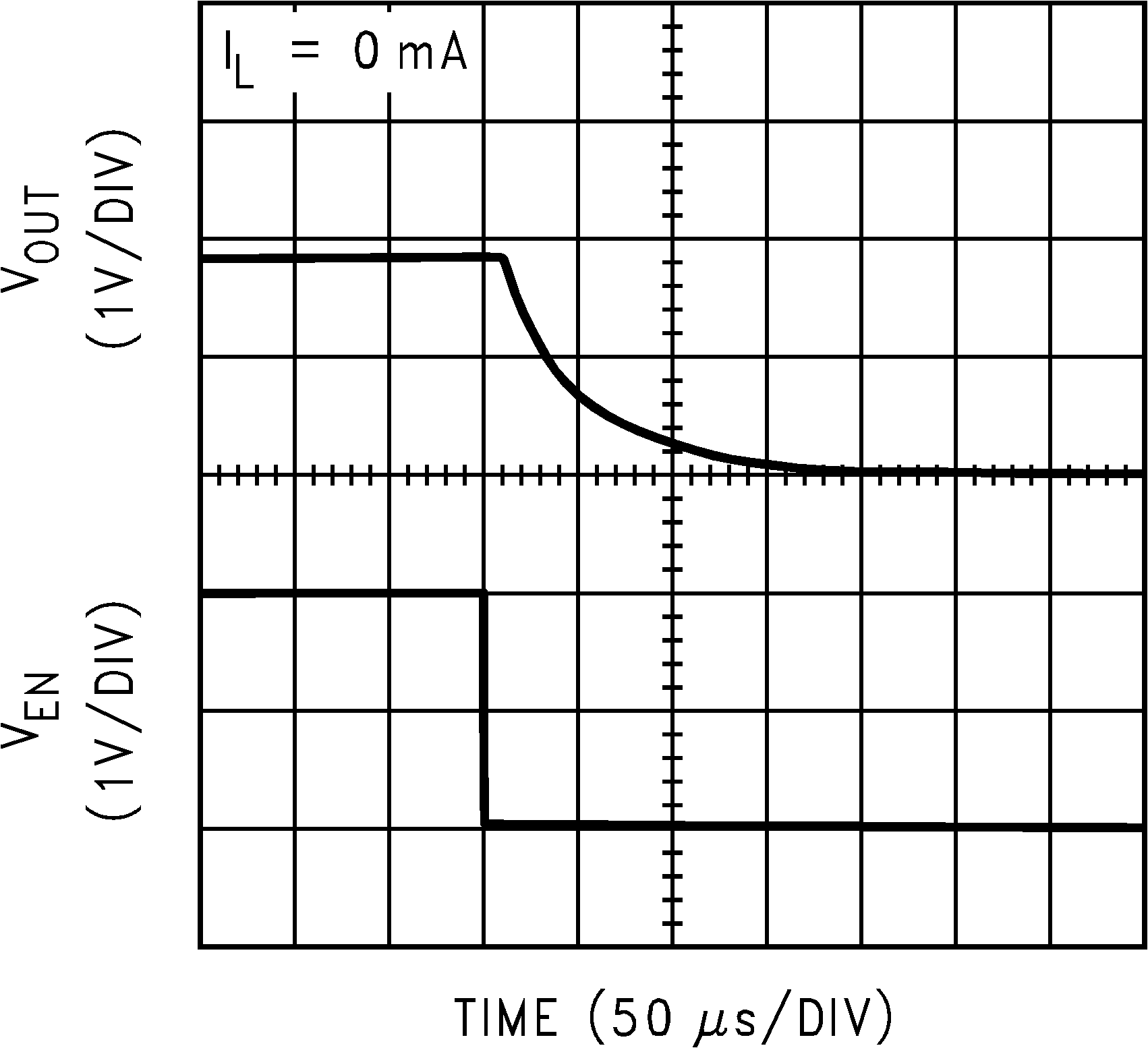
| VOUT = 1.8 V |
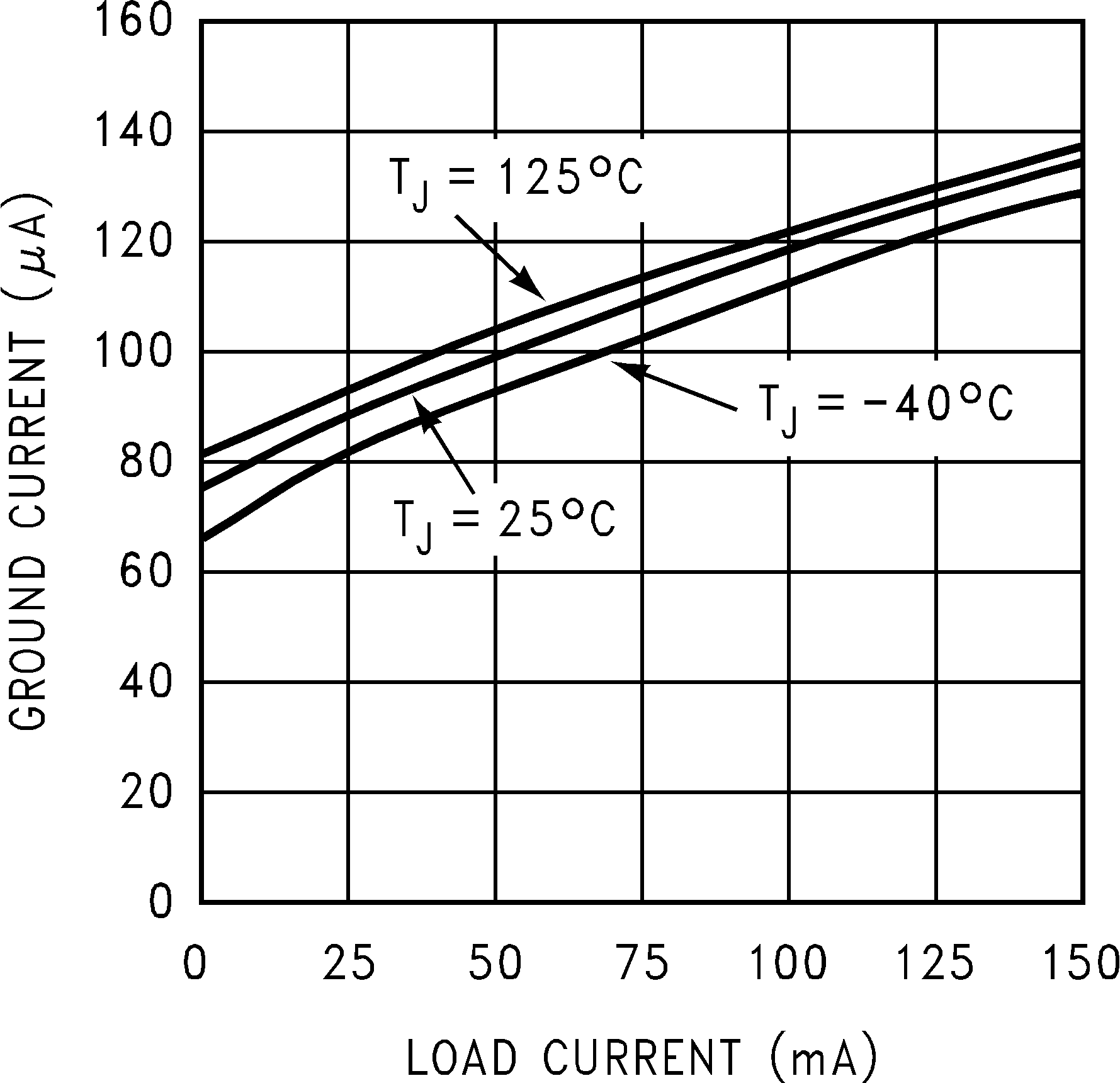
| VOUT = 1.8 V |
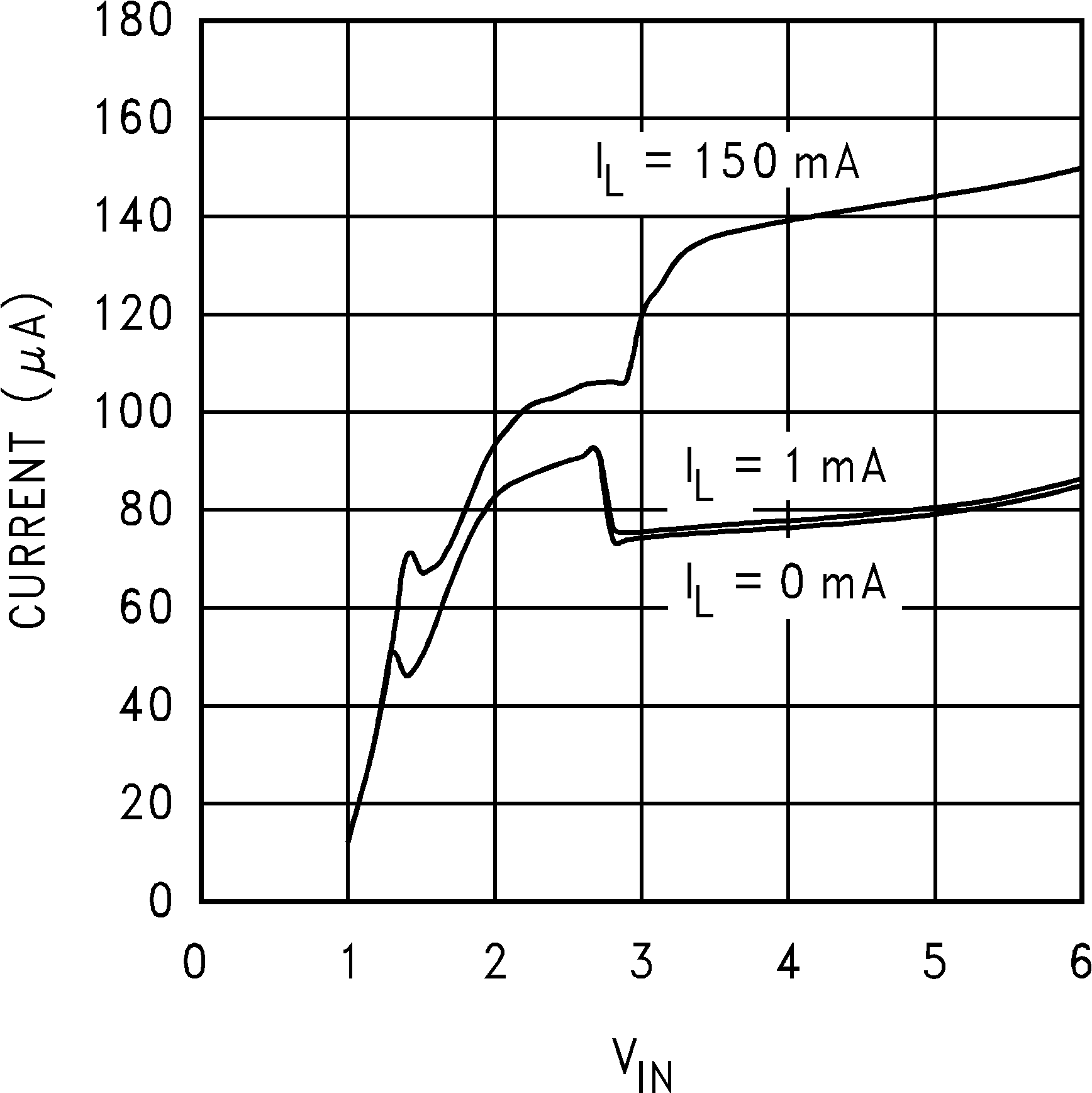
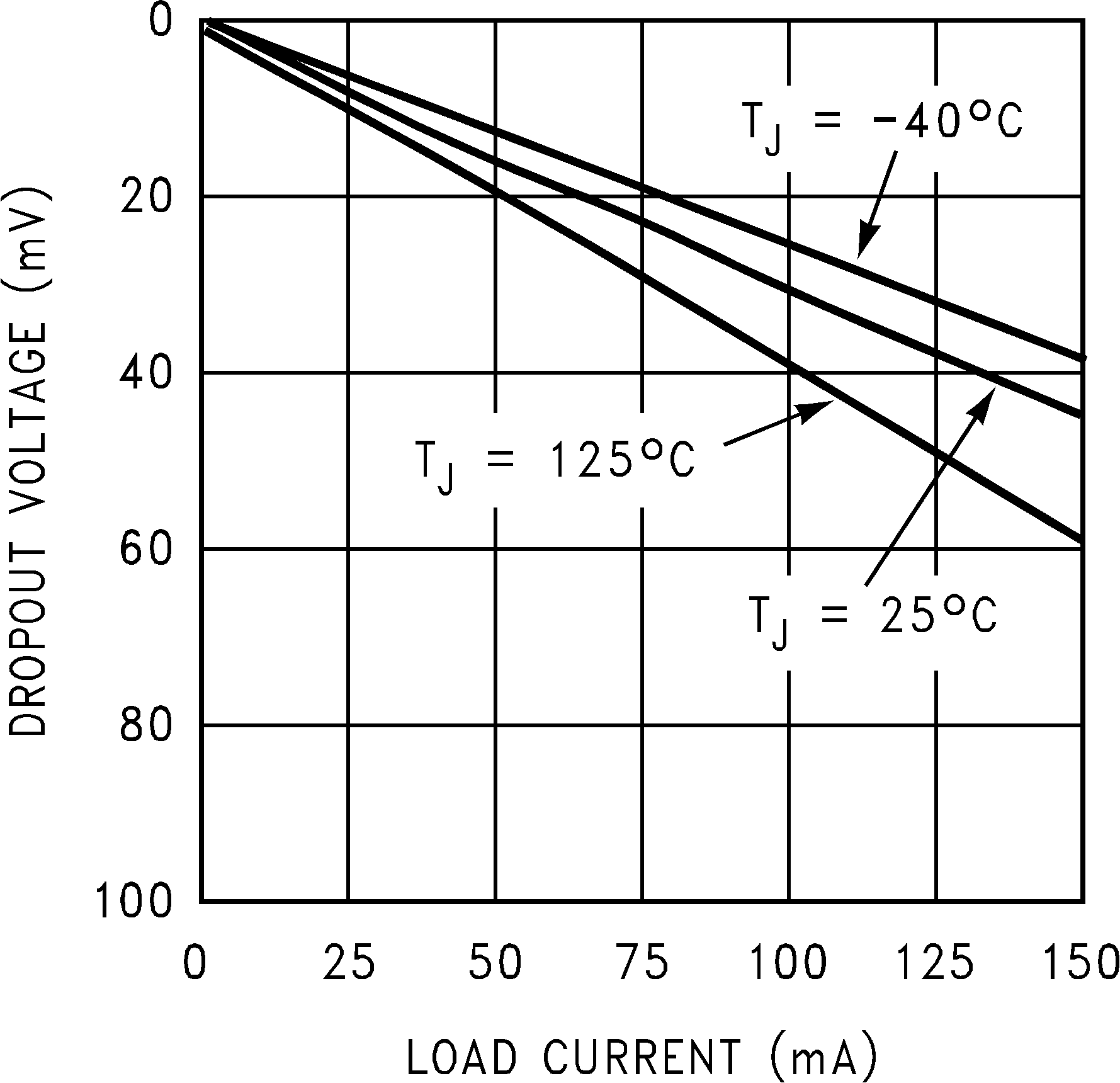
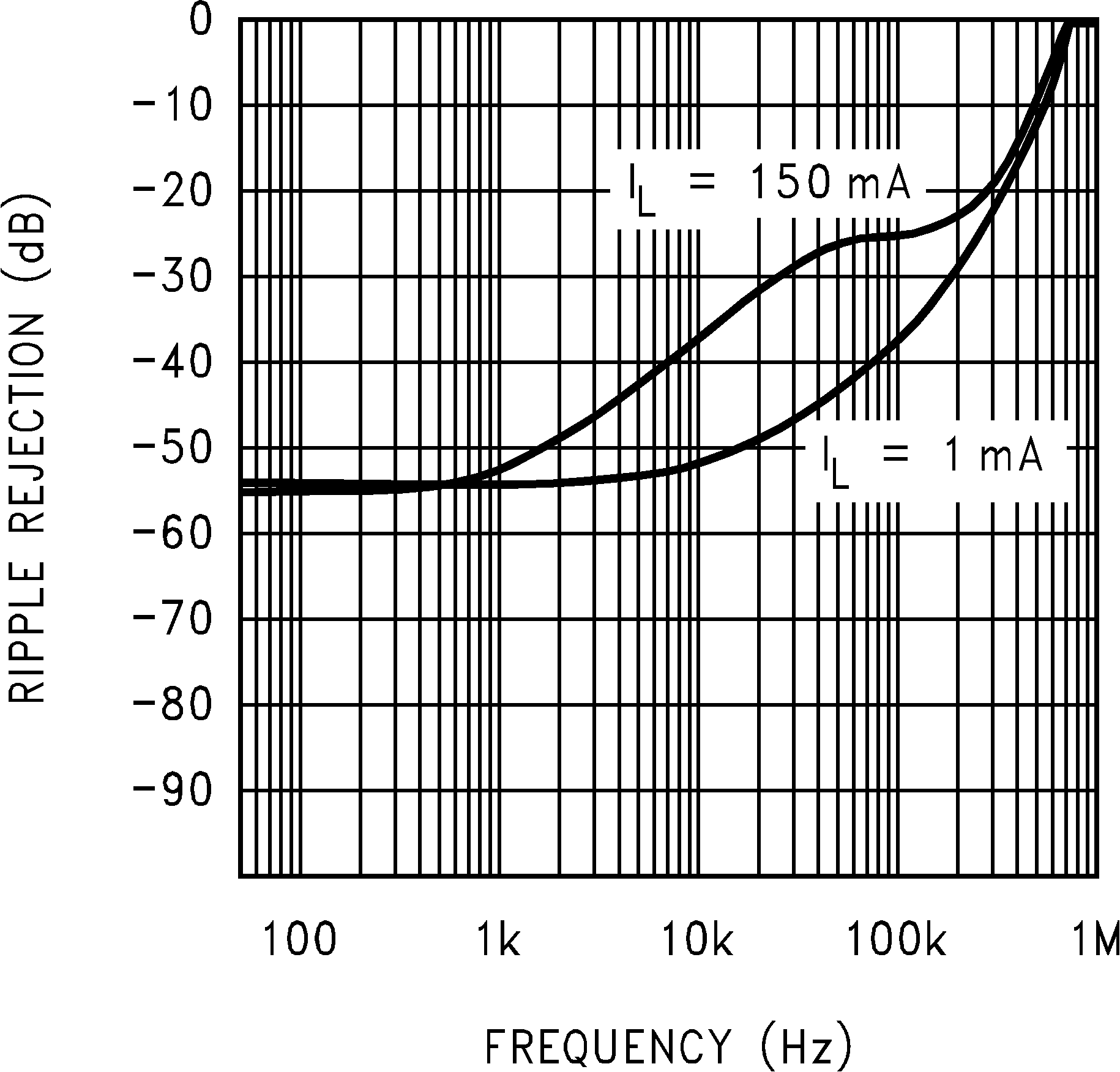
| VOUT = 1.8 V |
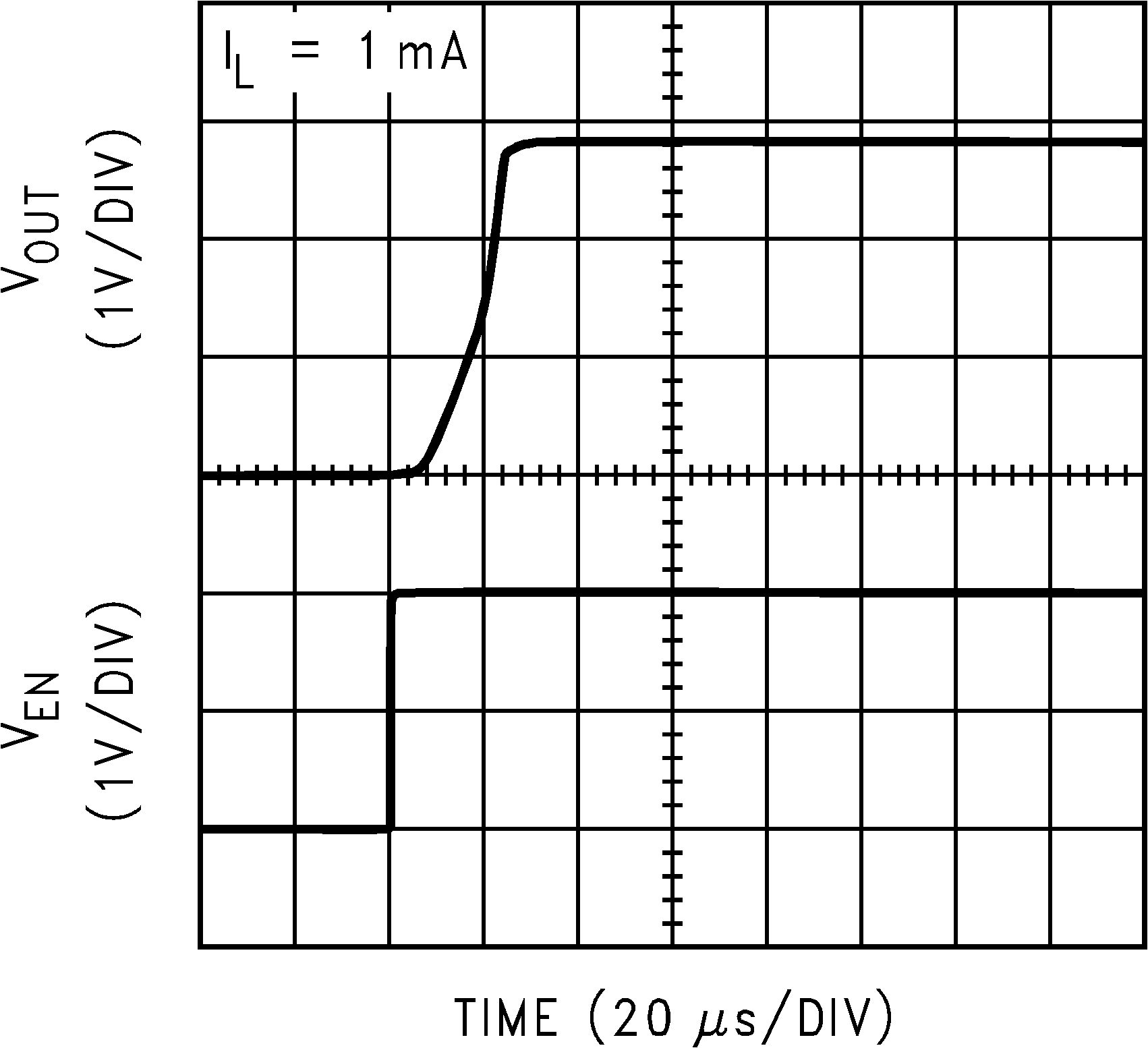
| VOUT = 2.8 V | ||
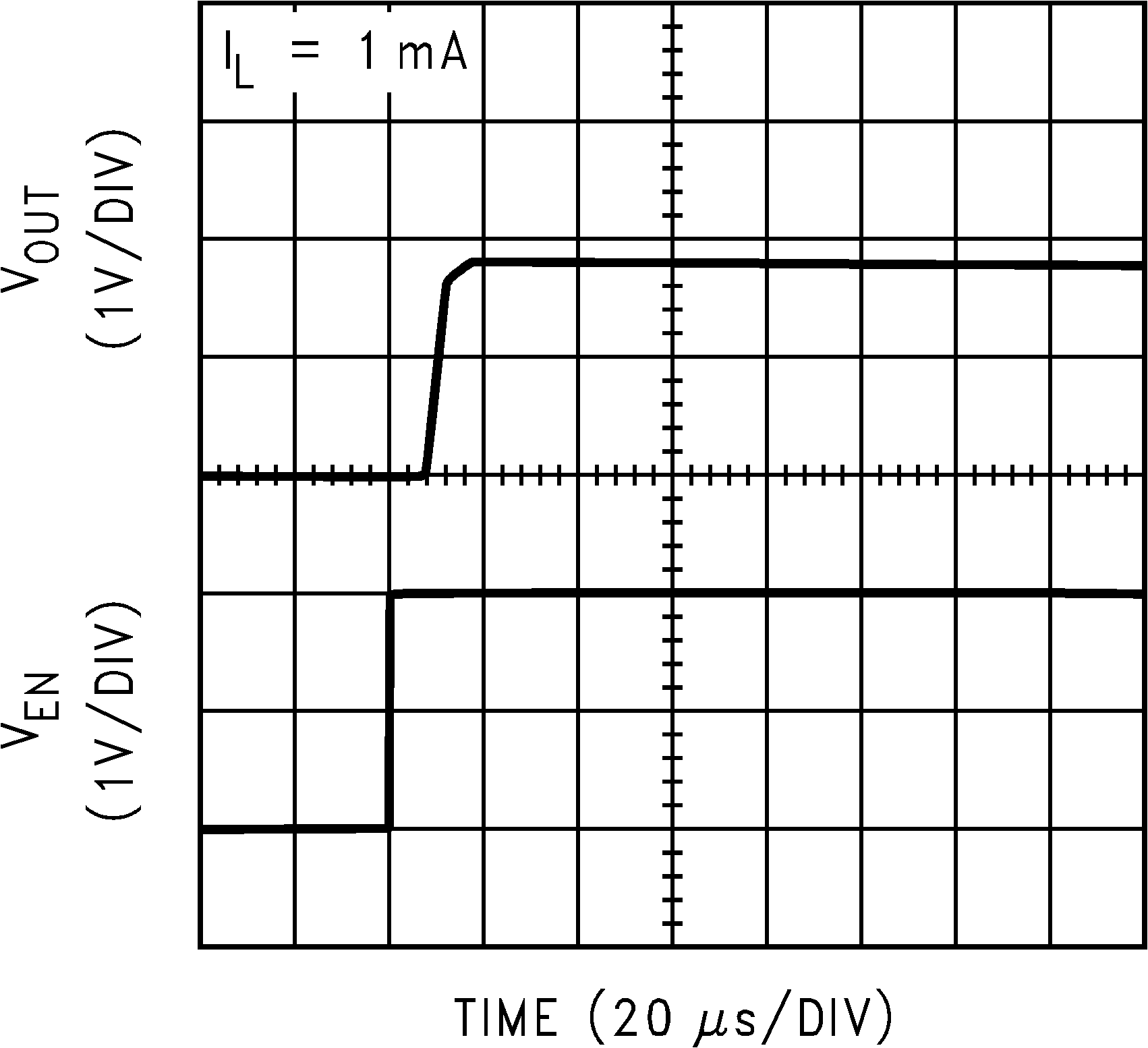
| VOUT = 1.8 V |
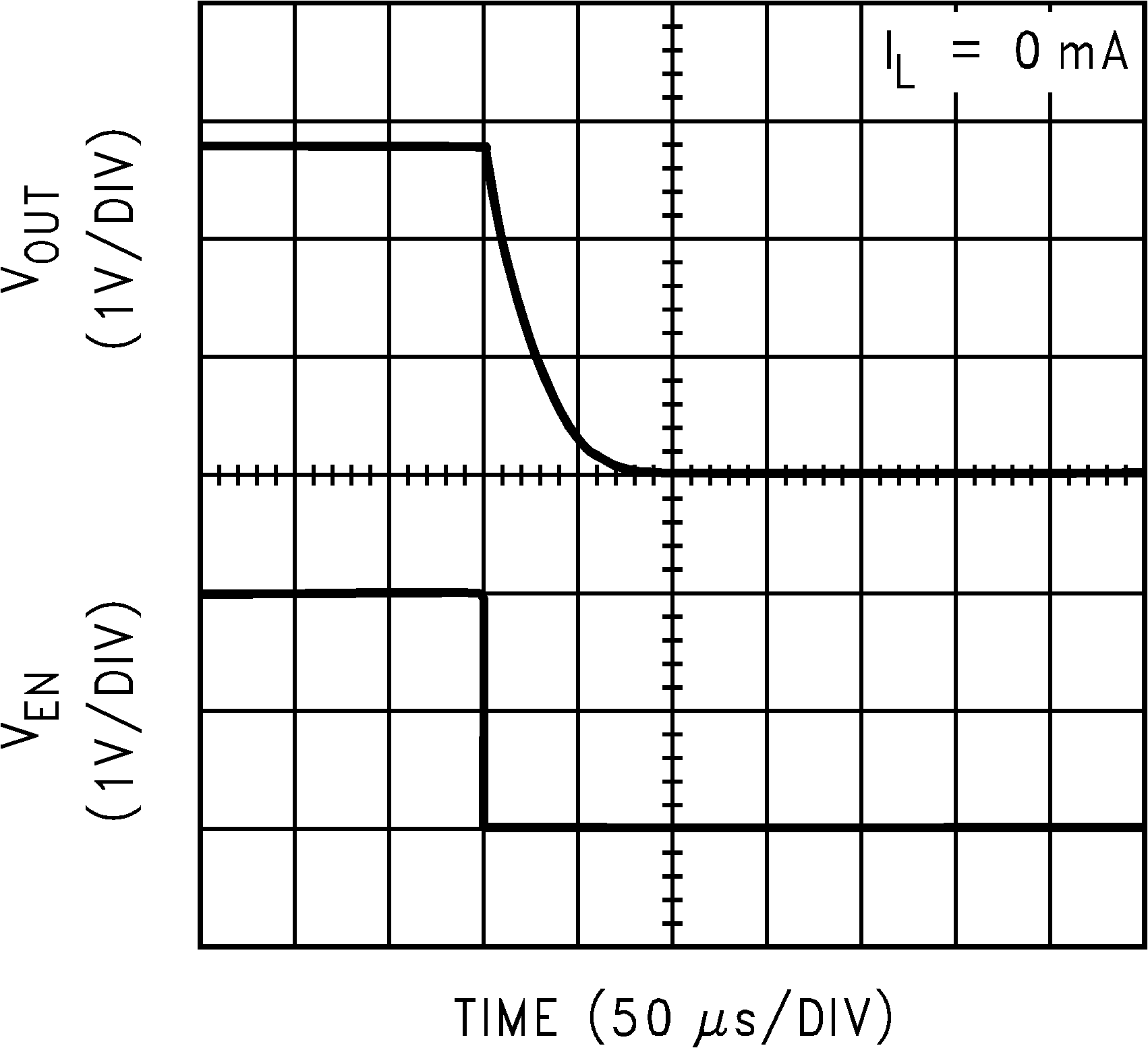
| VOUT = 2.8 V |